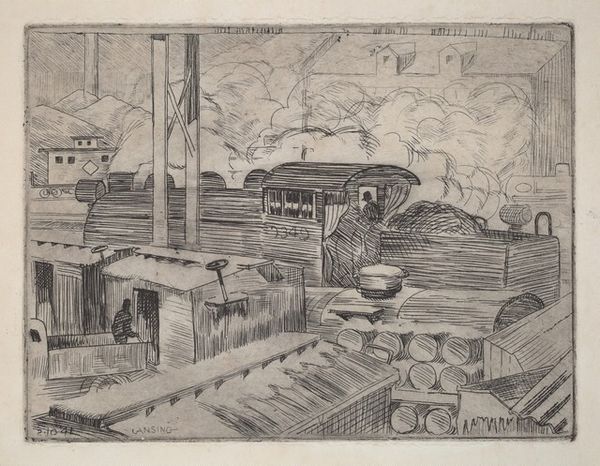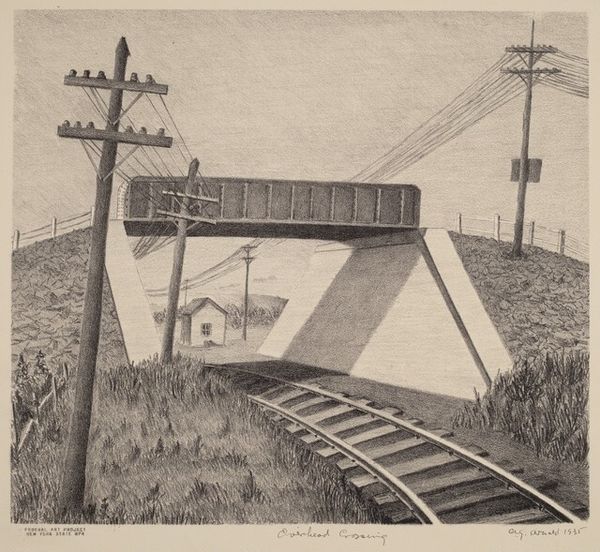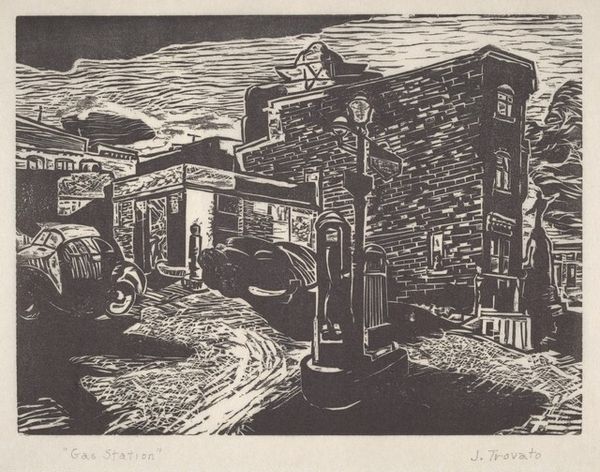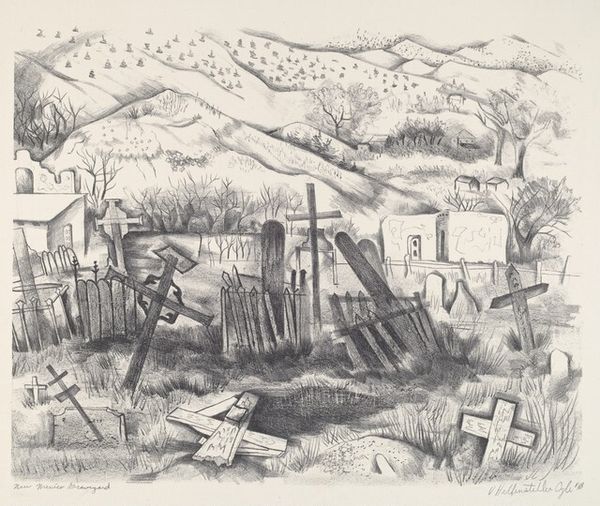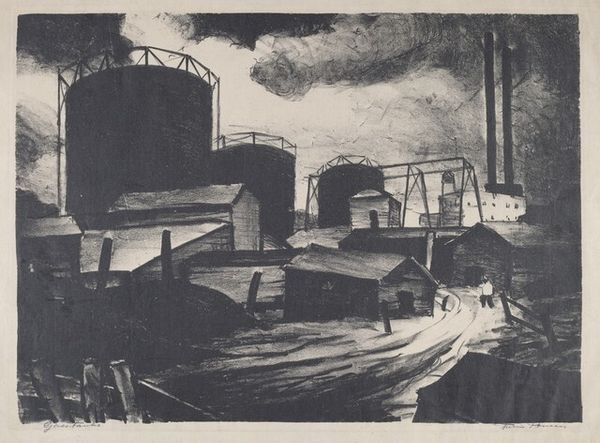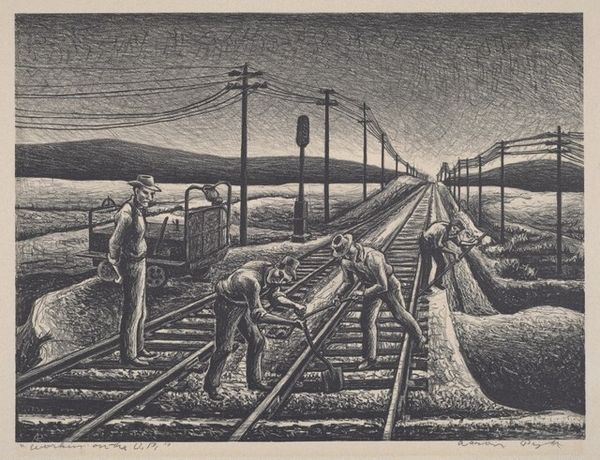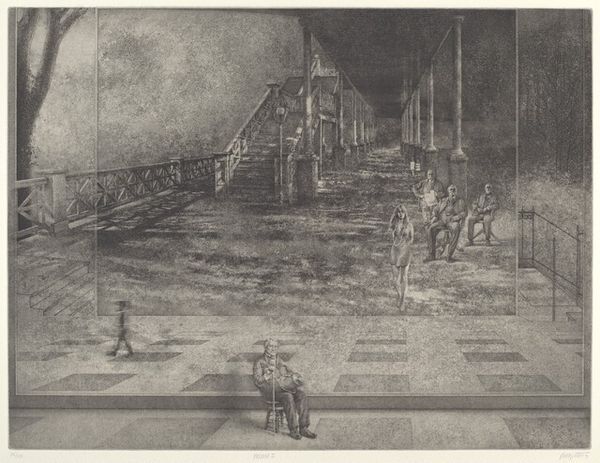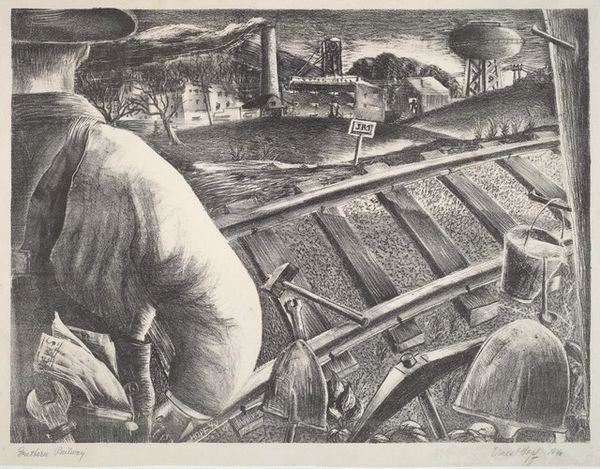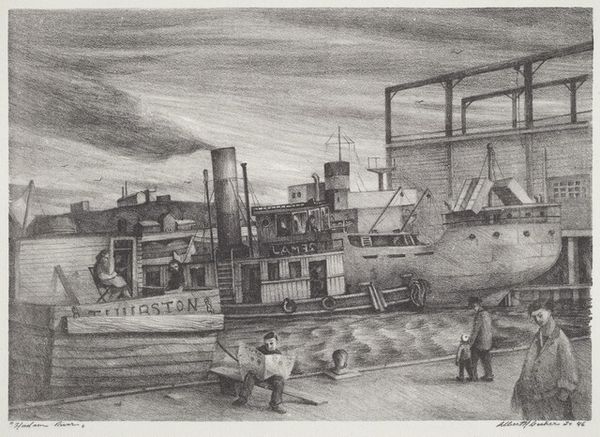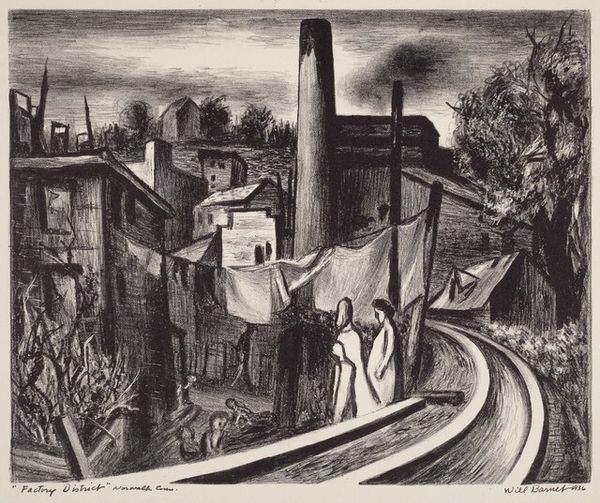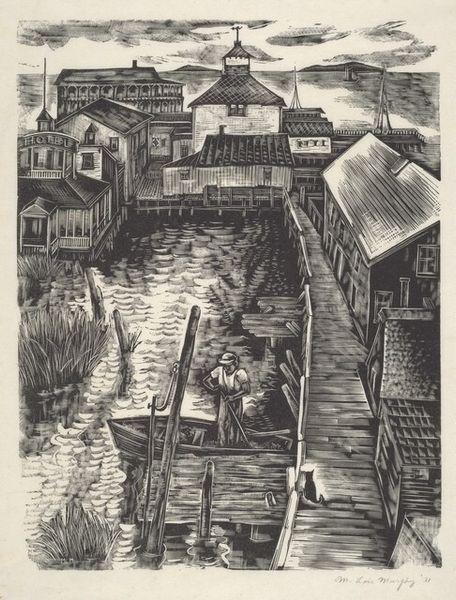
print, etching, graphite
# print
#
etching
#
landscape
#
etching
#
social-realism
#
graphite
#
realism
Dimensions: image: 244 x 318 mm paper: 292 x 400 mm
Copyright: National Gallery of Art: CC0 1.0
Curator: Bernarda Bryson’s "Cut-Over Land," created in 1936, stops me in my tracks with its meticulous etching, almost haunting, of a landscape transformed by industry. Editor: That looming stack of lumber—it's like a monochrome ziggurat presiding over a decimated realm. There’s a striking sense of the relentless, the industrialized stacking and consumption of natural resources, plain for all to see. Curator: Indeed, the precision in capturing the texture of the lumber, versus the ghostly remains of the forest in the background, tells such a sad tale. Notice the lone figure working; he feels so small, doesn't he? The future seemed very small back then, very burdened, I think. Editor: And burdened by what, exactly? Look closely at the production. It speaks to the sheer quantity of processed lumber—the wood ready for market—and highlights the manual labor involved, the means of production at a particular time in history. We could imagine Bryson as attuned to those historical processes of that moment. Curator: That resonates. It’s not just a portrait of labor; it’s about our disconnect, you know? Bryson gives us these minute details—smoke curling from chimneys, railway tracks disappearing into the distance—but there is something empty at its core, some silence about what's to come. The work invites empathy toward the natural world, even the man too! Editor: Empathy is certainly present in her rendering of these humble resources. But perhaps we should consider if this empathy extends to systems of exchange and exploitation of both the material, trees, and the humans working to reshape the very landscape. This extends well past that period to us, right now, into the contemporary? Curator: Exactly! It is haunting to view with modern eyes. What’s striking is that, beyond any specific commentary, Bryson created an artifact, really. And an incredibly poignant one that, even now, compels one to contemplate. Editor: I agree. Ultimately, Bryson’s etching prompts crucial reflections on our historical processes and production: how do we build our world, at what expense, and with what consequence for materials and lives intertwined.
Comments
No comments
Be the first to comment and join the conversation on the ultimate creative platform.

